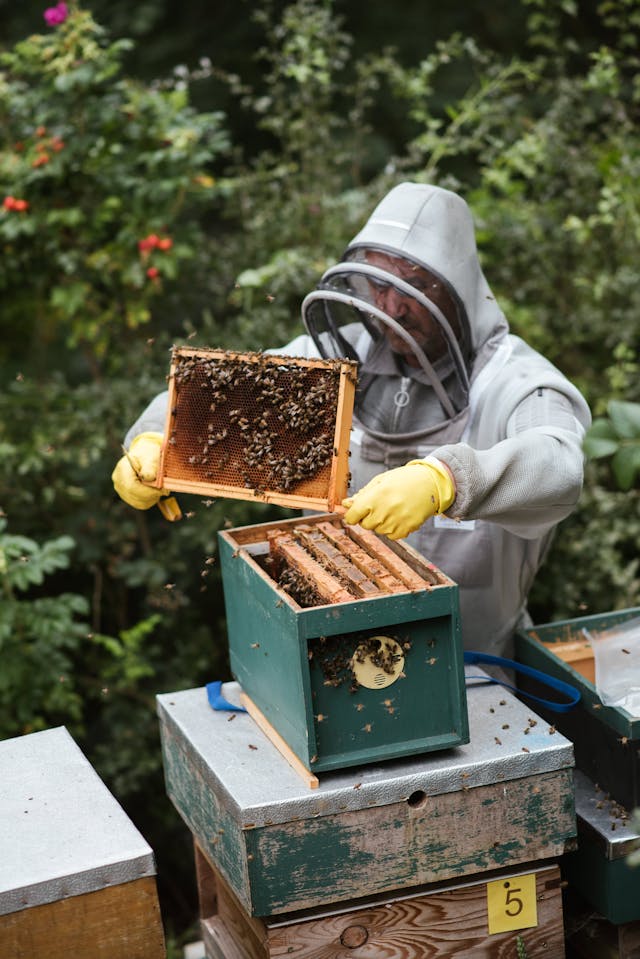
Hives for Sale: A Comprehensive Guide to Buying the Best Beehives
Share
Hives for Sale: A Comprehensive Guide to Buying the Best Beehives
Introduction
Purchasing a beehive is one of the most important decisions for beekeepers, whether beginners or experienced apiarists. The right hive will ensure the health and productivity of the bee colony while making hive management more efficient. This guide provides everything you need to know about hives for sale, including different types, materials, key features, and purchasing considerations.
Why Buying the Right Hive Matters
The hive serves as the home for honey bees, providing shelter, structure for honeycomb, and protection against environmental threats. A well-chosen hive:
- Enhances honey production
- Supports colony growth and health
- Simplifies hive inspections and maintenance
- Provides longevity and sustainability
Types of Beehives for Sale
There are various types of beehives available, each with unique features suited for different beekeeping styles.
1. Langstroth Hive
- The most commonly used hive in commercial and backyard beekeeping
- Composed of stacked rectangular boxes (supers) with removable frames
- Easy to expand as the colony grows
- Efficient for honey production and hive inspections
2. Top-Bar Hive
- Horizontal design with wooden bars instead of removable frames
- More natural bee behavior and comb-building
- Best for small-scale, sustainable beekeeping
- Less honey production but easier maintenance
3. Warre Hive
- Vertical hive similar to Langstroth but with smaller, self-contained boxes
- Requires minimal intervention and mimics natural tree cavities
- Ideal for beekeepers looking for low-maintenance, natural methods
4. Flow Hive
- Features a built-in honey extraction system, eliminating the need for centrifuges
- Frames have a unique design that allows honey to be harvested directly from the hive
- More expensive but highly convenient for hobbyists
5. Observation Hive
- Designed for educational purposes and scientific research
- Features a glass or clear plastic panel for easy colony viewing
- Limited honey production but valuable for learning about bee behavior
Hive Materials: Wood vs. Plastic
Beehives are constructed from different materials, with wood and plastic being the most common.
-
Wooden Hives
- Traditional choice, offering insulation and durability
- Requires maintenance (painting, sealing, or treating against moisture and pests)
- More sustainable and biodegradable
-
Plastic Hives
- Lightweight, durable, and resistant to moisture
- Less maintenance required
- Some models offer modular features for easier expansion
Key Features to Consider When Buying a Hive
To ensure you purchase the best hive for your needs, consider the following:
-
Size and Capacity
- Small hives (1-2 boxes) are ideal for beginners.
- Larger hives support stronger colonies and higher honey production.
-
Frame Compatibility
- Ensure the hive fits standard frames for easy replacement and maintenance.
-
Ease of Hive Management
- Look for features that simplify inspections, honey extraction, and colony care.
-
Ventilation and Insulation
- Proper airflow prevents moisture buildup and ensures hive health.
-
Pest and Predator Resistance
- Some hives have built-in guards against ants, mites, and larger predators like bears.
Where to Buy Beehives
You can purchase beehives from various sources, including:
-
Local Beekeeping Supply Stores
- Allows inspection of hive quality before purchase
- Provides local beekeeping advice and support
-
Online Beekeeping Retailers
- Wide variety of hive options
- Convenient home delivery
-
Beekeeping Associations and Clubs
- Often offer discounted or group-purchase options
- Excellent source of advice and recommendations
-
Custom Hive Builders
- Ideal for beekeepers needing specialized hive designs
- Can be more expensive but tailored to specific needs
Costs of Beehives for Sale
Hive prices vary depending on type, material, and additional features. Here is a general pricing guide:
- Langstroth Hive: $100 - $300
- Top-Bar Hive: $150 - $250
- Warre Hive: $200 - $350
- Flow Hive: $400 - $800
- Observation Hive: $150 - $500
Additional costs include frames, foundation, hive stands, and accessories such as feeders and entrance reducers.
Setting Up a New Hive
Once you purchase your hive, follow these steps for a successful setup:
-
Choose the Right Location
- Ensure access to flowers, water sources, and good sunlight.
- Place the hive in a sheltered area to protect from strong winds.
-
Assemble the Hive Properly
- Follow manufacturer instructions carefully.
- Use non-toxic glue and nails for extra durability.
-
Introduce Bees to the Hive
- Install package bees or nucleus colonies (nucs) correctly.
- Ensure the queen is accepted by the worker bees.
-
Provide Initial Feeding
- Offer sugar syrup to help the bees establish themselves.
-
Monitor Hive Health Regularly
- Check for pests, diseases, and adequate food stores.
- Conduct routine inspections to ensure colony growth and honey production.
Common Challenges When Buying Hives
Despite careful planning, some beekeepers encounter challenges such as:
- Poor Quality Hives: Avoid cheaply made hives that may deteriorate quickly.
- Incorrect Hive Type for Climate: Some hives perform better in specific climates.
- Lack of Expansion Options: Consider hives that allow future growth.
- Improper Assembly: Follow guidelines to prevent leaks, drafts, or structural failure.
Best Practices for Hive Success
To ensure your hive thrives, follow these best practices:
- Invest in a Good Hive from the Start
- Ensure Bees Have a Strong Forage Area
- Conduct Regular Hive Inspections
- Manage Pests and Diseases Early
- Join a Beekeeping Community for Support
Conclusion
Purchasing the right beehive is essential for a successful and sustainable beekeeping experience. By understanding the different hive types, materials, and features, beekeepers can make informed choices that benefit both their bees and their honey production goals. Whether you are a beginner or a seasoned beekeeper, selecting a high-quality hive will lay the foundation for a thriving apiary and rewarding beekeeping journey.
